Neoton (Phosphocreatine) powder for solution for infusions 1 g x 4 vials
$302.30
Description
Composition
Each bottle contains the active ingredient: sodium salt of phosphocreatine 1.0 g.
Pharmacological Properties
Pharmacokinetics
Distribution: After a single intravenous infusion, the maximum concentration of the drug in the blood is reached within 1-3 minutes.
The highest amount of the drug accumulates in skeletal muscles, the myocardium, and the brain. Accumulation of the drug in the liver and lungs is minimal.
Elimination: When administered once, phosphocreatine is rapidly eliminated from the blood. The elimination of phosphocreatine is biphasic, consisting of a “fast” and a “slow” phase. The half-life in the “fast” phase is 4-6 minutes and is characterized by a reduction in phosphocreatine concentration in the plasma to 10-20% of the initial value; the half-life in the “slow” phase is 30-40 minutes. Metabolism of exogenous phosphocreatine involves enzymatic dephosphorylation of creatine, cyclization of creatine into creatinine, and excretion in the urine.
Pharmacodynamics
Neoton is a medication that improves the metabolism of the myocardium and muscle tissue. It has cardioprotective, membrane-stabilizing, antiarrhythmic, and metabolic effects. In terms of chemical structure, it is similar to endogenous phosphocreatine involved in macroenergetics. Neoton inhibits the process of sarcolemma destruction in ischemic cardiomyocytes and myocytes, providing intracellular energy transport. Due to its ability to enhance microcirculation, the drug reduces the size of the necrosis and ischemic zones. During ischemia and post-ischemic reperfusion, it exerts an antiarrhythmic effect by reducing ventricular ectopic activity and preserving the physiological function of Purkinje fibers.
Indications for Use
In comprehensive therapy for:
- Acute myocardial infarction
- Chronic heart failure
- Intraoperative myocardial ischemia
- Intraoperative limb ischemia
- Acute cerebrovascular disorders
- In sports medicine: to prevent the development of physical strain syndrome and adaptation to extreme physical loads.
Dosage and Administration
In acute myocardial infarction, administer 2-4 g intravenously as a bolus within the first 24 hours, followed by a slow infusion of 8-16 g in 200 ml of 5% glucose solution over 2 hours. On the second day, administer 2-4 g intravenously as a slow infusion twice a day. On the third day, administer 2 g intravenously as a slow infusion twice a day. If necessary, the course of infusions of the drug at 2 g twice a day can be continued for up to 6 days.
In chronic heart failure, administer 1-2 g intravenously as a slow infusion twice a day for 10-14 days.
For intraoperative myocardial ischemia, add 3 g of the drug to a regular cardioplegic solution per 1 liter. Neoton should be added to the solution immediately before administration. It is recommended to conduct a course of infusions of the drug at 2 g twice a day for 3-5 days before surgery and for 1-2 days after surgery, to prevent the development of intraoperative limb ischemia, if possible, administer 2-4 g of the drug intravenously as a bolus before surgery, followed by an infusion of 8-10 g in a 5% glucose solution during the operation and reperfusion period.
In acute ischemic stroke, administer the drug intravenously for 8 hours after the onset of symptoms. Initially, administer 2 g over 10 minutes, followed by 8 g over 2 hours intravenously at a rate of 4 g/h, and then administer 4 g over 8 hours intravenously at a rate of 4 g/h. The total dose is 34 g, administered over 3 days.
In sports medicine, to prevent the development of physical strain syndrome and adaptation to stress during high-intensity training, administer 1-2 g intravenously (over 30 minutes) daily for 3-4 weeks.
Possible Side Effects
- A drop in blood pressure (with rapid intravenous administration)
- Allergic reactions may occur
Contraindications
- Increased sensitivity to the drug
- Chronic renal failure (in doses exceeding 4 g of phosphocreatine)
Drug Interactions
When used as part of comprehensive therapy, Neoton enhances the effectiveness of antiarrhythmic and anti-anginal drugs, as well as drugs that have a positive effect on myocardial inotropic function.
Special Instructions
A rapid intravenous injection at doses exceeding 1 g of phosphocreatine may cause a drop in blood pressure.
The drug should be administered as soon as possible when signs of ischemia occur, which provides a more favorable prognosis for the disease.
Neoton is not used for the emergency correction of heart activity disorders.
Pregnancy and Lactation
There is no information regarding the safety and effectiveness of the drug during pregnancy and lactation. However, it is known that phosphocreatine does not have a toxic effect on reproductive characteristics and intrauterine development in animals. Neoton should only be used during pregnancy when the benefit to the mother outweighs the potential risk to the fetus. If the drug needs to be used during lactation, breastfeeding should be discontinued.
Use in Pediatrics
The results of Neoton use were observed during open-heart surgeries for congenital heart defects, in the therapy of ischemic heart disease, and metabolic syndrome in children aged from 9 days to 13 years.
After reperfusion, a significantly higher number of cases of spontaneous sinus rhythm restoration were noted, a significant reduction in the number of cases of atrioventricular block, and postoperative arrhythmias. During reperfusion, cases of ventricular fibrillation were also observed with a significantly lower frequency, with a reduced need for electrical cardioversion to restore sinus rhythm.
The use of phosphocreatine required lower doses of inotropic drugs.
Studies have shown that adding phosphocreatine to cardioplegic solution provides protective effects on the myocardium, improves functional and hemodynamic status.
When analyzing clinical results of Neoton use in the therapy of myocarditis in children aged from 6 months to 13 years, it was shown that Neoton more effectively controls heart failure, arrhythmias, reduces the intensity of symptoms, and relieves patients from suffering in a relatively shorter period.
Impact on the ability to drive vehicles or potentially hazardous machinery
No negative effects have been identified.
Overdose
Not identified.
Storage Conditions
- Store at temperatures not exceeding 25°C.
- Keep out of reach of children!
Shelf Life – 3 years
The period of use of the prepared solution should not exceed 24 hours.
Do not use after the expiration date.
Additional information
| Ingredient |
|---|





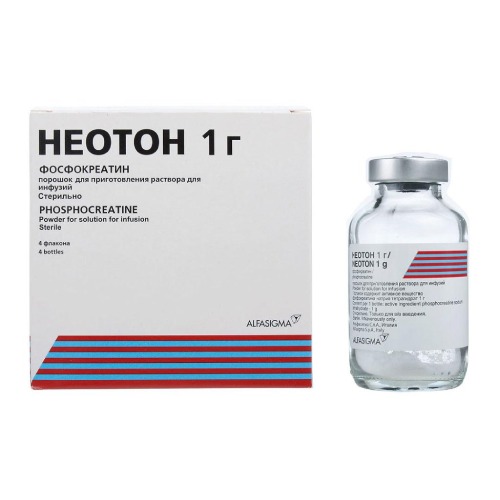
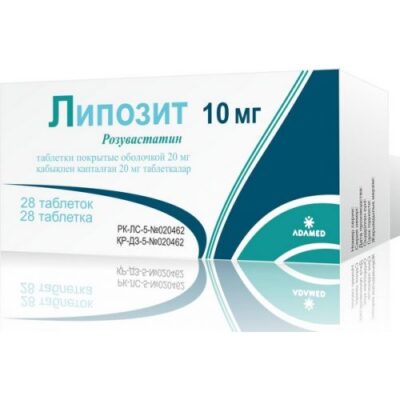
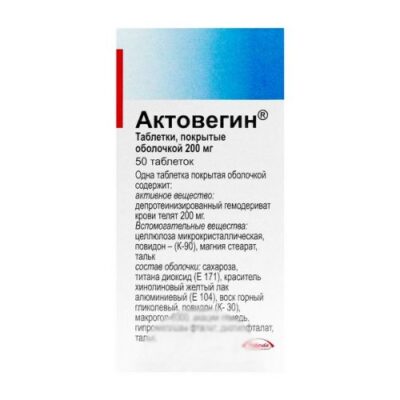
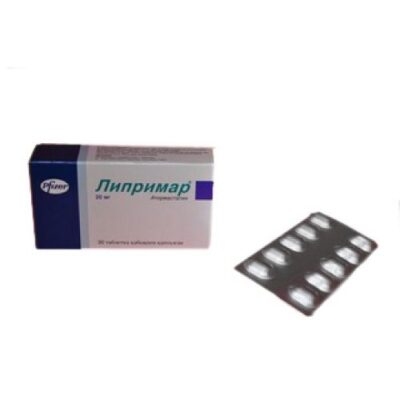
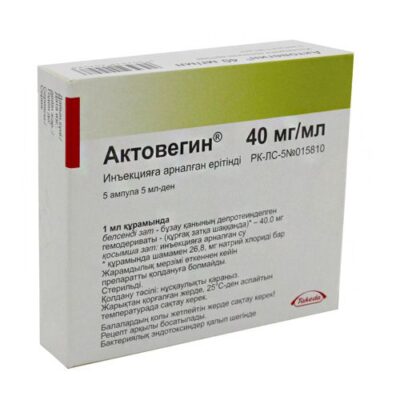
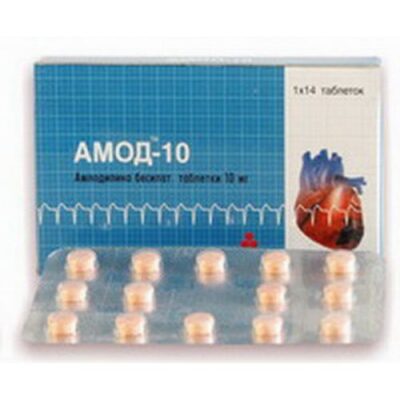
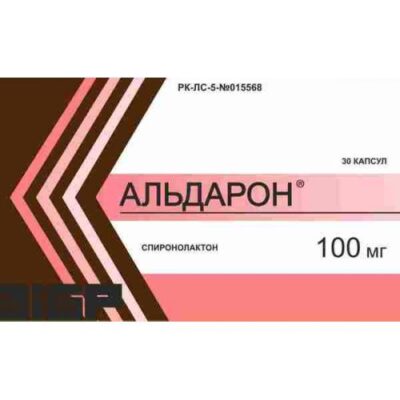
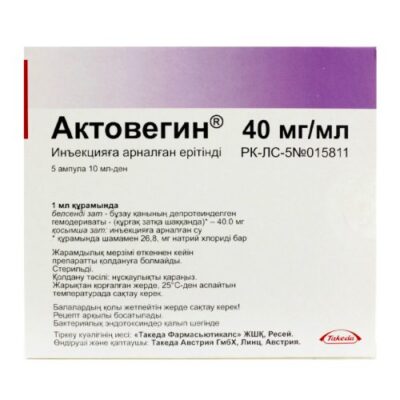
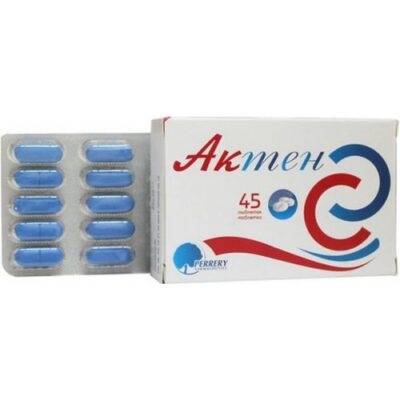
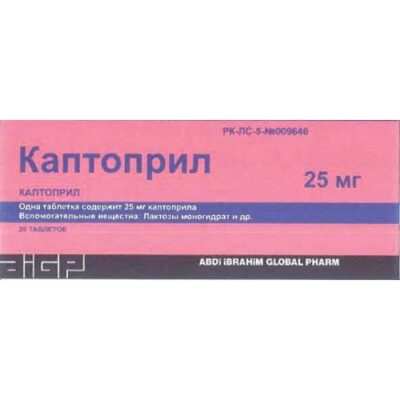
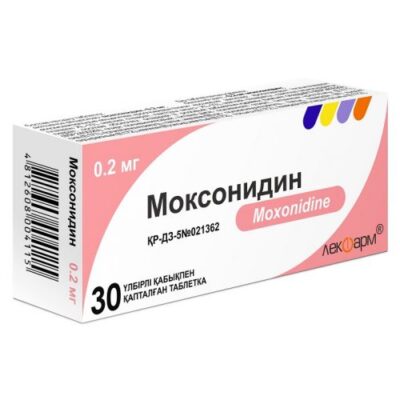






Reviews
There are no reviews yet.